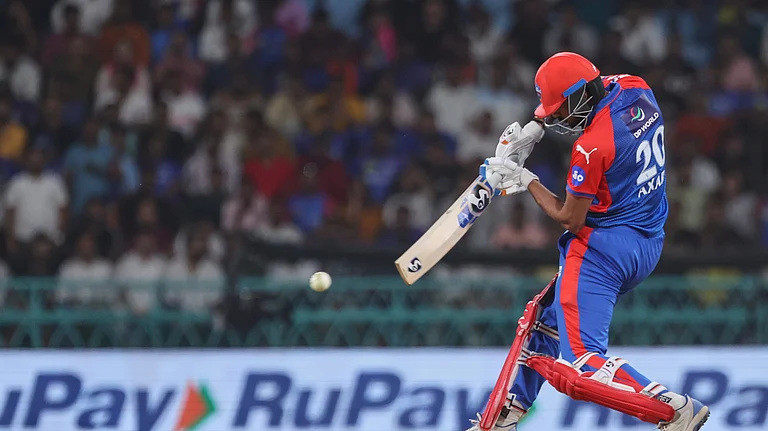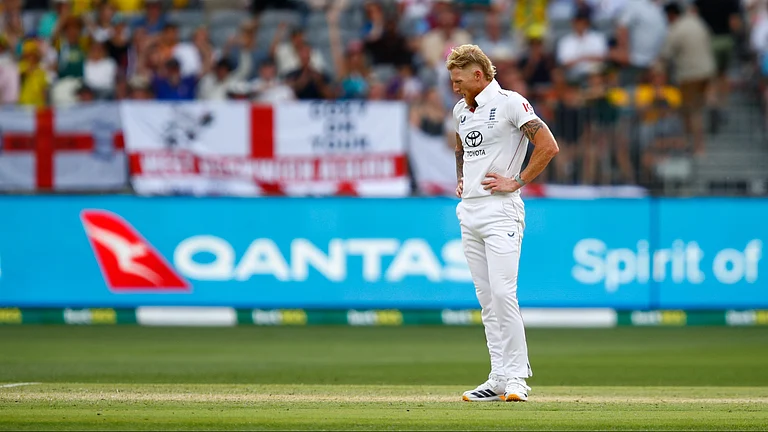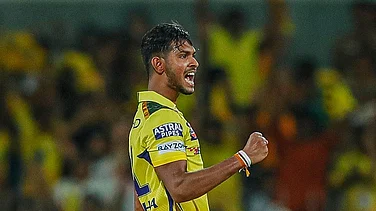The recently concluded World Cup found 12 cricketers of Indian origin in the Kenya, West Indies, UAE, New Zealand and England teams. Chances are that by the time the next World Cup gets rolling in England, you might have a couple of them sneaking into the South Africa and Zimbabwe teams.
Topping the list in terms of numbers was Kenya with six amateur players of Indian origin in their squad of 14, starting with Dipak Chudasama, 32, who's a dentist back in Nairobi and who really sunk into the Indian attack at Cuttack. And, from all appearances, relished every morsel.
Says Asif Karim, 32, left-arm spinner from Kenya: "As amateurs, what else do we want? Cricketers who live for cricket were there and we were with them." Karim, like most other Kenyan players, plays cricket thrice a week after office hours in Nairobi. The only one amongst the Indians to be married, Karim's other love is tennis. He's not just been on a five-year tennis scholarship to the US, he's an ex-Davis Cupper for Kenya. Says he: "I played against Egypt in 1988 but lost." For a living he runs a forex bureau and a sports shop, besides being an insurance broker.
Others who have excelled in sports outside cricket include Chudasama and Tariq Iqbal, 31, the Kenyan wicketkeeper. Chudasama played table-tennis for Kenya in the 1982 Commonwealth games in Bombay and Iqbal played field hockey in 1981-85. Says Iqbal: "I was the centre-half. I guess my best moment in hockey was playing Pakistan in Nairobi when they had Hasan Sardar as centre-forward." All this, besides being a civil engineer in a Japanese company.
While cricket in Kenya is nearly 100 years old, it's limited to Nairobi and the coastal town of Mombasa. Here, the Asian settlers used to indulge their passion for the green on Sundays. This evolved into an eight-month season—where league matches are played on an overs basis—and the game, once monopolised by Asians, is now spreading among the indigenous population.
Says Balwinder Singh Sandhu, former Ind-ian Test player and cricket coach in Kenya for seven years: "The talent lies with the indigenous Africans. The Asians only have money." While the Africans have taken to the game only in the last 10 years, they've come up fast. Says Jasmer Singh, team manager of the Kenyan team: "There are eight of them in the team now. They are keen and have a natural ability. Our emphasis is now on local people. We are aiming for Test status in another five years."
Fortuitous geography has been responsible for most of the current crop of cricketers. Says Iqbal: "Me, Maurice Odumbe, the captain, and the Tikolos, Steve and Edward, have grown up together in the same area. Park Road."
For a country that was once just a match away from the quarter-finals, the cricket-playing population is just 200, with 30-odd players at the national level. Says Zulfikar Devji, the team's physiotherapist: "You never see cricket on the Kenyan streets.''
While Devji doesn't think the muscle fibre type of the indigenous Kenyans will turn any of them into fast bowlers of the Caribbean type, he feels they are natural athletes and it reflects in the team's superior fielding. "Kenyans are natural endurance athletes. They aren't the power type that come from the Caribbean," he says.
Interestingly, all Indians in the team have roots in Gujarat and are either first or second generation Indians. Hitesh Modi, 24, the left-handed number five batsman who scored 28 against the West Indies, has folks in Junagadh whom he visited after the tournament. He studied in Rajkot for four years and currently works as a senior sales executive in an office automation company in Nairobi. He was especially excited playing in the Cup: "You come alone, then you don't get this type of treatment." Chuda-sama is another player who's studied in India. Says he: "I studied to become a dentist at Manipal in Karnataka. Before that I was in Chandigarh for a year and played cricket for Punjab University."
A player on cloud nine, however, after taking Brian Lara's and Richie Richardson's wickets in the Pune match, is Rajab Ali, 30. A hardware sales manager, Ali feels his performance might even get him a promotion at work. Coming from a family of six sisters and three brothers, Ali's younger brother too made it to the team but didn't play well enough to continue.
The unique cultural background of the players has seen them become fluent in five languages, Gujarati, English, Hindi, Swahili and one of the local dialects. "But," says Hanumant Singh, coach of the squad, "we mostly speak Swahili on the field." Even the indigenous Africans have picked up some Hindi. Says a smiling Martin Suji, the team's opening bowler along with Ali: "We understand words like ek and seedha seedha ."
Another players of Kenyan - Indian origin but now playing for New Zealand, Dipak Narshibhai Patel is one of the senior - most members of the team. Born in Nairobi in 1958, Patel later emigrated and sees himself as "basically a New Zealander, no different from the other guys". He adds: "I have no real links with India but I have always admired the cricketing talent produced by the country." Patel, best remembered for his shock opening bowler role in the 1992 World Cup, played only one of the league matches for the Kiwis in this World Cup but made an appearance against Australia in the quarter-finals, picking Mark Taylor's scalp at Madras.
But while all the Indians in the Kenyan team have live roots in India, it's not so in the Caribbean. Says Tony Harford, commercial manager of the West Indies team: "I have roots in India from my mother's side but we in the Caribbean aren't given to chasing things like that." Responsible for looking after the West Indies Cricket Board's commercial interests and the person who negotiated the Kingfisher beer contract for the team, Harford grew up as neighbour to V.S. Naipaul's mother. "I knew her well. Naipaul himself emigrated to England much too early for me to know him."
The other Indian in the team from Guyana, 21-year-old Shivnarine Chanderpaul, too has no current roots in India. A practising Hindu and only brother to two sisters, Chanderpaul grew up in Unity village on the east coast of the island. From humble origins, Chanderpaul's father coaches the under-15 team in the district and was the cricketer's first inspiration. Says he: "My father was most important to my taking up cricket. I started playing at the age of eight." The youngest member in the West Indies cricket team and around for nearly three years, Chanderpaul's got no "cricketing idols" except that he tries to learn from all the good players around. Says Captain Richie Richardson about Chanderpaul: "He came in the hard way. Lots of good performances. He is going from strength to strength. But I don't know whether he will become another Lara. I am not a prophet."
The player best remembered right now for being Lara's partner at the other end when the superstar scored his 375 against England, Chanderpaul came into his own in the series against England and recently in Australia where he surprised people with his ability to clear long boundaries despite his height. Overlooked for long, bafflingly, in favour of Keith Arthurton for the Test side, the Guyanese youngster now seems to have secured himself a permanent slot in the Test side. In the World Cup he top scored for the West Indies in three matches, against India and Kenya and against Australia in the semi-final at Chandigarh. Adds Richardson after the semi-final loss: "Chanderpaul has a great future. He just has this problem of cramps when he plays a long innings."
One Indian who narrowly missed playing in the World Cup was Rajinder Dhanraj, the Caribbean spinner who broke Courtney Walsh's domestic record in the Red Stripes competition by taking 40 wickets, four more than Walsh. But another one who hopped on to the bus midway was England's Mark Ramprakash, who replaced an injured Neil Fairbrother. The cricketing Indian with the name most likely to be parodied was, however, Shaukat Fakir Dukanwala of the UAE. The burly offspinner became an instant hit in Pakistan with people calling out 'Dukanwala, dukan mein kya bechtey ho (what do you sell in your shop?)'. Dukan-wala still thinks of Bombay as his home where he was born in 1964 and grew up playing cricket. Having represented Gujarat in the Ranji Trophy, he moved to the UAE five years ago. Says he: "The move allowed me to play quality cricket." Though the UAE played dismal cricket in the World Cup, except against Holland, his performances with bat and ball have stood out.
Another reject from the Indian cricketing system resurrected in the team from the Emirates has been Vijay Mehra. Born in New York in 1963, Mehra represented a junior Delhi team in many domestic tournaments, toting his personal best of 206 in one of them. He played with distinction in the ICC trophy at Nairobi too, scoring 96 against Uganda. The performance of the Indian team was followed closely. Mehra considers himself to be an Indian even though he has been a resident of the UAE for the past few years.
A thought for the day. How well do you think this team made up of the Indian diaspora would perform against any of the teams that played the Cup? Asif Karim (captain), Dipak Chudasama, Shivnarine Chanderpaul, Mark Ramprakash (vice-captain), Hitesh Modi, Vijay Mehra, Dipak Patel, Tariq Iqbal (wicket-keeper), Rajab Ali, Shaukat Dukanwala, Brijal Patel. 12th man: Saeed Al Safar. Coach: Hanumant Singh.






















